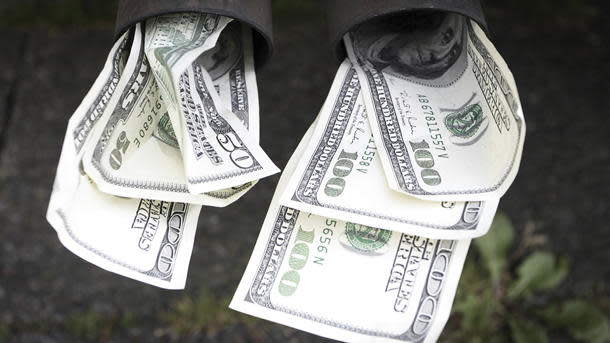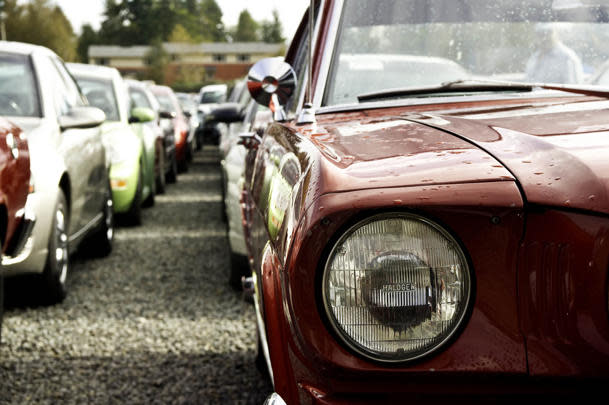 Motoramic
MotoramicThree ways to keep your car from bankrupting you
For every mile you drive your car, it devours your savings to the tune of 78.3 cents, according to the American Automobile Association. Multiply that number by 15,000 miles a year and decades of driving, and automotive ownership costs can make Ivy League tuition seem almost affordable.
Even though many Americans are driving less, the costs of traveling haven't declined much if at all. Thankfully, you can lower your cost (of the car) with three strategies. Each one of these can put a nice six-figure bonus back into your savings account over the course of a lifetime, and a fat smile on your face whenever you turn the key.
Strategy One: Conserve
Automotive conservationists are not motivated by performance, comfort or snob appeal. All they want to do is get from point A to point B while keeping as much money in their pocket as the laws of automotive economics will ordain.
They want to save in the showroom, at the pump, after service, and at trade-in time. In other words, all the time and anytime.
In my experiences as a car dealer, conservationists are depreciation hawks and therefore big fans of used-car creme puffs. This is not only because depreciation is usually the greatest long-term expense in the ownership experience. Insurance premiums, government taxes, and repairs are also usually lower with older vehicles as well.
When it comes to finding that next car, conservationists are condition junkies to the extreme who will unflinchingly ask for the entire maintenance history of a used car before spending their limited funds. They love those records and will often times pay a premium for an extensive set of them.
They are exceptionally brand loyal, and often times will frequent enthusiast sites that specialize in providing guidance owners to who have a specific older model.
Once their car is bought, they invest in the idea of long-term ownership. When replacement parts are needed for their vehicle, they focus on quality first and cost second. They listen to experts, and visit well-established auto repair shops, who are familiar with the needs of that vehicle. The conserver realizes that high-quality replacement parts and a knowledgeable mechanic (or do-it-yourself owner) make all the difference in how well, and how long, a car is kept on the road.
So if you are willing to ignore the endless marketing machine that encourages new car purchases, go find yourself a nice older used car that appeals to you from a quality perspective. Then research the unique costs that may come over time with that specific model, and consider building a relationship with others who know more about that vehicle. Every vehicle has weaknesses, and good insights are an invaluable resource when it comes to planning for your car's issues as it ages.

Strategy Two: Endurance
When most folks think of a car that last forever, they think of an old Volvo, Toyota, Honda or Mercedes.
That’s so last century. These days, most every automobile built can crest 200,000 miles without much trouble. In fact, 200,000 has largely become the new 150,000, the tipping point that tells an owner with a reliable car that he or she has found a machine that can go the distance.
Let’s face it. With depreciation, taxes and insurance eating up your cost of ownership, a long-term keeper remains one of your cheapest possible ownership options. So buy what's worth keeping, regardless of how much or how little you love cars.
Sound familiar? That's because the endurers among us are also closet conservationists. However, the difference is they tend to pay cash up front for a new car (they consider monthly payments and interest charges an automotive fashion victim’s sin tax) and drive the car for a long, long time.
The endurer isn’t looking to trade in their wheels anytime soon (i.e. they plan to run the vehicle into the ground). So they could care less about the short-term residuals. It’s all about keeping the car going to get to those "cheap miles" at the end of the (hopefully) epic ownership period.
That means fastidious maintenance, knowing the car's weak points, and not getting too worked up over the inevitable cost of wear-and-tear.
To benefit from an endurers' sagacity, just buy a well-kept car you enjoy and hold it as long as you possibly can. Period.
Strategy Three: Mule Trade 'Em!
Mule traders almost always buy from used car auctions or private individuals sell cars that are either unpopular or unwanted. However, recent high used car values for late model vehicles have allowed a chosen few to buy the new popular car and sell it used for minimal depreciation losses.
Regardless of when they buy, mule traders choose the vehicle that they believe will hold its value in the retail market.
Due to a fashion-fickle public, and sinister depreciation curves, many mule traders skip the way cool late model stuff and go for "sleds" — vehicles that cost $5,000 or less.
They drive 'em, fix 'em, sell 'em, rinse and repeat.
Of course, not all mules are broken down beasts of burden. There are plenty of hot used cars available that may protect the mule trader’s money (e.g. the Jeep Wrangler, 1st gen Scion Xb, and Honda Fit). Likewise there are also plenty of unpopular vehicles that can be bought at a strong discount at the lower end of the market (minivans, non-sporty stickshift vehicles, orphan cars from Daewoos to Saabs).
Both strategies can work; although the vehicle that is purchased for less money will be the lower-risk proposition. After anywhere between six months to 18 months, the trader will enjoy his tryst, and move on to the next love affair with a similar pile of cash in their wallet.
So Which One Is The Best?
Whether you reduce your overall automotive operating costs by conserving cash, staying the course, or taking advantage of automotive fashions, there’s always an opportunity to save a chunk of change on your motoring expenses.
The challenge is determining which mindset best suits your budget, skills and time. As Patek Phillipe’s ads used to say, "Choose once, but choose wisely."
Photos: iStockphoto/tarboxje via Flickr/Kimberly Gauthlier via Flickr

 Yahoo Autos
Yahoo Autos 

